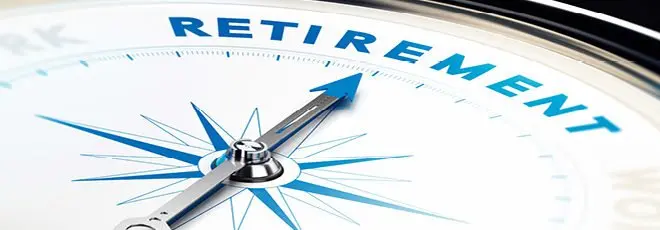60% of Americans Aren’t Saving Enough for Retirement

- A Freedom Debt Relief survey found that 60% of Americans save less than $1,000 a year for retirement, including the 41% who have no retirement savings at all.
- Determine how much you need and how much time you have to save it.
- Start saving as soon as you can and put away as much as oyu can for a secure retirement.
Table of Contents
What’s your target retirement date? For many people, the answer may be, “I don’t have one.” Saving money for retirement is something we all know we should be doing. But like so many other things in life, it’s easier said than done.
According to a recent survey conducted by Freedom Debt Relief, 60 percent of American households are saving less than $1,000 per year for retirement. What’s even more shocking is that 41 percent of households say they aren’t saving any money at all.
It’s not that Americans don’t want to save for retirement—they just feel like they can’t. According to the survey, 32 percent of Americans say that everyday expenses are the biggest barrier they face when trying to increase their savings, and 17 percent said that their debt was getting in the way of their savings.
With so little being saved each year, retirement may just be a distant dream for most. In fact, 45 percent of people surveyed were so detached from their retirements saving goals that they didn’t even check their pay roll stub last month to see their progress.
So how much should you be saving to make sure you’re saving enough for retirement? What tools and resources should you use to make sure you’re doing it right? We asked retirement expert Barbara Friedberg these questions and more. Here’s what she had to say:
How much should you save for retirement?
Many factors go into saving for retirement including your age, cost of living, and additional income sources. If possible, it’s best to save 15% of your income for retirement. If that doesn’t work for you, try 10%, or even 5%. Any amount of saving for retirement is better than not saving. If you want a simple set of retirement saving guidelines, Fidelity has a recommendation.
A retirement calculator is also helpful in determining the amount you’ll need to save. One calculation is to estimate your annual living expenses and then subtract the income you’ll receive from Social Security. The difference is the amount of money you’ll need each year from your own savings.
For example, common wisdom suggests you can withdraw 4% from your savings in retirement. So, if you need $30,000 to supplement Social Security, and you start retirement with $500,000, earn 6% annually from your retirement investments and withdraw $30,000 per year you’ll have $250,000 remaining for your heirs in 30 years.
When should you start saving?
Now. Time is the most important factor in building wealth for retirement. Your money is like a snowball at the top of a hill, and the investment income is the snow that builds as the ball rolls down the hill. The longer the snowball rolls, the bigger it gets.
The same is true of your retirement savings. The earlier you start investing, the more likely you are to be saving enough for retirement. For example, if you start saving $5,000 per year at age 25 and earn a 7 percent return on your investment, your retirement account will be worth $1.068 million when you hit age 65. On the other hand, if you wait until you’re 45 to begin, you’ll need to save over $22,000 per year to end up with $1 million at age 65 (assuming the same 7 percent rate of return).
What tools can help you stay on track?
There are so many great apps and tools to help with retirement savings today. Here are a few favorites:
Personal Capital has a terrific retirement calculator and a 360-degree view of your money.
OnTrajectory is another great retirement planning tool and calculator.
Robo-advisor apps are low cost ways to invest for the future that take the stress out of managing your investments on your own.
Mint offers a free version of its app for basic budgeting and saving.
In order to be a good steward of your money, it’s important to keep track of what you have and what you spend. There are many tools out there to help you do just that.
Top tips to ensure you’re saving enough for retirement
What’s most important is to start today and put as much as you can into your workplace 401(k), Roth IRA, Traditional IRA, or an investment brokerage account. Next, automate your retirement saving. That means you should have a portion of your income automatically withdrawn from your paycheck to go directly into a 401(k) or other retirement account.
You can also take a risk quiz to find out how much to invest in stocks vs. bonds. But regardless, you should continue to invest during the market ups and downs. Lastly, remember to increase your retirement investing every time you get a pay raise. All of these strategies can help you build enough wealth to retire comfortably.
Plan for retirement with better money management
Ensuring you have enough savings for retirement requires planning and discipline. Luckily, learning how to deal with money, debt, and planning for your future doesn’t need to be hard. At Freedom Debt Relief, we’ve developed a simple to follow guide to help you find the tools you need to move to a better financial future. Get started by downloading our free guide right now.
Learn More
How to Create Your 2020 Financial Plan (Freedom Debt Relief)
Why You Should Be Adding Money to Your Retirement Account Right Now Instead of Panicking (Business Insider)
5 Best Apps to Effortlessly Save for Retirement (Freedom Debt Relief)
62% of Americans Say They’re Behind on Saving for Retirement—Here Are 4 Ways to Catch Up (CNBC)